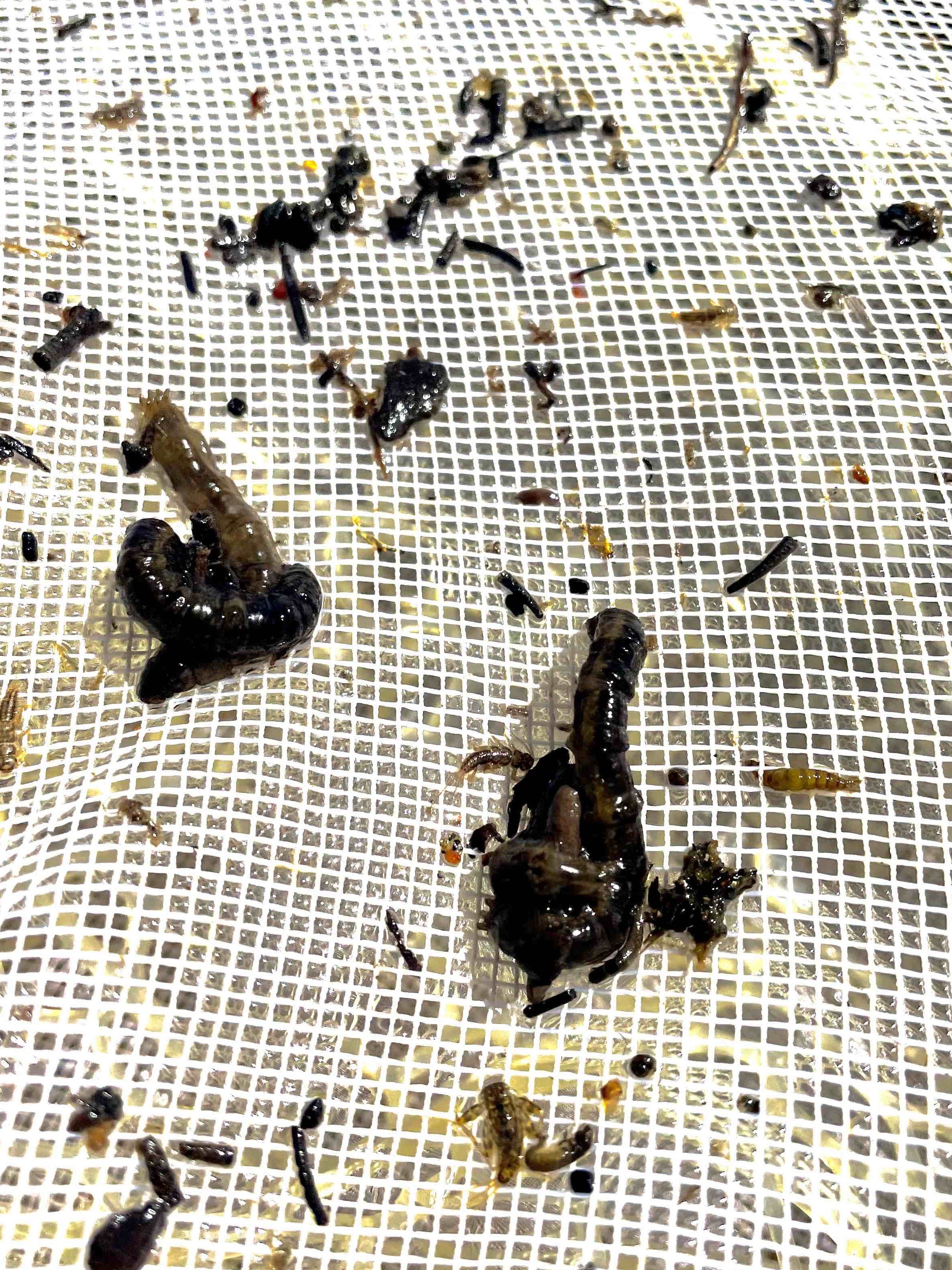The Cranefly: September Bug of the Month
Some of you may be familiar with the song that contained the lyric, “What’s that buzz? Tell me what’s a’happenin’!” from the album Jesus Christ Superstar. Well, when it comes to fly fishing, that buzz may be the adult cranefly on a warm September evening. Because of its presence throughout our local fisheries, the cranefly is our September Bug of the Month.
The General Low-Down on the Cranefly
Cranefly larvae are almost grub-like. They may appear to have no head because it is retracted inside the first segment of the abdomen. They can range in size from ¾” to 4”.

Usually tan or grey, the larvae can be either land-based or aquatic bugs. Larvae require fallen moist tree leaves or crowns to feed on. As the larvae burrow into the sediment of the stream bed, this stage is usually not visible in the spring. Because of this habit of burrowing deep into the riverbed, high water is often an angler’s friend. With higher flows – after a release from a dam or after a good rain – the larva get dislodged and sent downstream.
The larval stage can last from a few weeks to even several years depending on region. Because of this lengthy stage, larva patterns can be a great go-to pattern from spring through the fall.
The pupa stage happens on land near bodies of water. This stage of a cranefly’s life can last anywhere between one and two weeks. Because pupation happens on land, it is really of very little interest to the angler. (I don’t even know why I am telling you this.)
The adults, sometimes called “mosquito hawks” because of their large size and resemblance to mosquitoes, are harmless. With their long legs, and another nickname of “daddy long-legs,” they can reach a length of over an inch.
The adult stage is only present for a brief time. The primary purpose of a crane fly is to mate, and after it mates and lays eggs, it dies.
How to Fish It
Since the cranefly larvae have no swimming ability, fish the imitations deep and near the banks. Rachel Leinweber, Covey General Manager and Guide, says, “I always fish the larva as my point fly, closest to my split shot. Since the naturals are always close to the bottom of the water column, this mimics their true nature.” Another strategy she uses is to fish with a weighted cranefly with no split shot at all. This allows them to be a more convincing attractor pattern.”
Fishing cranefly imitations on small streams, where the banks might be only a few feet apart, can be very productive. Dead drifting a larva pattern along the banks or near submerged logs, tree limbs, or mid-stream boulders is often productive.
Rachel explains why she enjoys fishing with the cranefly larva. “Imagine the volume of little midges a trout has to eat in order to consume the same amount of calories and protein. This makes them very opportunistic eaters.”
I love the way trout tend to take craneflies: aggressively. Their take is a lot more fun than that subtle take with smaller bugs.”
~~ Rachel Leinweber
While many anglers fish the subsurface crane fly larvae patterns, we can’t neglect to tie on an adult pattern to mimic these clumsy fliers.
In the heat of the summer, the adults may decrease, but as temperatures begin to change in September, the adult can be a good choice. When the heat of day turns into the cooler dusk and shadows stretch over the water, tie on an adult.
Because of their erratic flight patterns, adult patterns coated with a high quality, gel-type floatant can be very productive. Riding higher in the water and skated across the surface can get otherwise wary fish to risk a strike. Again, anglers who pound the banks with these bigger bugs may be rewarded with an aggressive take. Whether dead drifting along the bank or skittering an adult across the surface, the cranefly can definitely be a go-to pattern.
How to Tie It
Check out these vids for different cranefly imitations:
Final thoughts
No doubt about it, the fish in our tailwaters have seen their share of food sources by the time we get to September. This month that transitions us from the heat of summer to the cooler days of fall is a great time to give them some variety. And a nice change, a big feast at the end of summer, comes in the form of craneflies. Whether mimicking the beefy larva or the skitterish adult, tie one on.

As usual, nicely done!